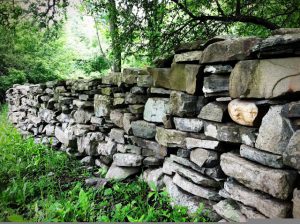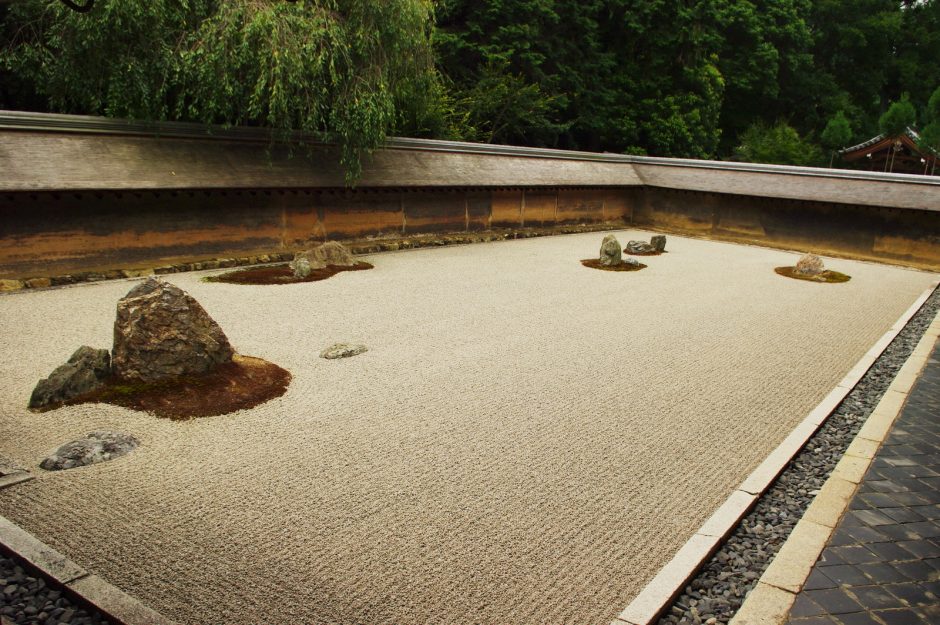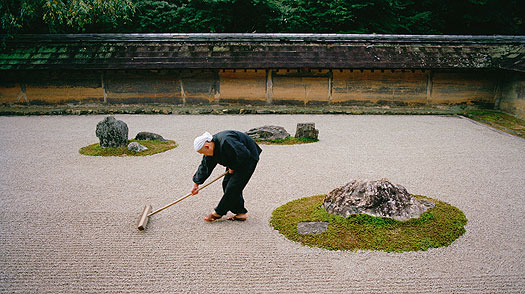If you wish, you can hear the sermon as it was preached from the UCJ pulpit. Simply click the play button below:
Delivered at the United Church of Jaffrey
May14th, 2017
1Peter 2:2-10; Excerpt from “Stone by Stone” by Robert Thorson.
 Abandoned stonewalls are the signatures of rural New England. Crisscrossing the parks, suburbs and farms of nearly every village and town they are relics of a vanished agricultural civilization that once flourished in hillside farming communities. In 1939 the mining engineer Oliver Bowles, using data from an 1872 Department of Agriculture report on fences, estimated that there were approximately 240,000 miles stonewalls in New England. That’s longer than the US coastline, or even the distance to the moon.
Abandoned stonewalls are the signatures of rural New England. Crisscrossing the parks, suburbs and farms of nearly every village and town they are relics of a vanished agricultural civilization that once flourished in hillside farming communities. In 1939 the mining engineer Oliver Bowles, using data from an 1872 Department of Agriculture report on fences, estimated that there were approximately 240,000 miles stonewalls in New England. That’s longer than the US coastline, or even the distance to the moon.
There are old stone walls elsewhere, but only in New England do they rise above the level of architectural ornaments to the status of landforms. Kentucky has its caves, Florida it’s coral reefs, Louisiana it’s bayous, Arizona it’s arroyos, Washington it’s volcanoes, Minnesota it’s lakes, and New England its stone walls. The landscape would simply not be the same without them.
Robert Thorson
What is a rock?
Well…
We ought to know…
As the author, Robert Thorson, points out in today’s Modern reading, we, here in New England, are very familiar with Rocks.
Everywhere we look, we see rocks.
Along every roadside, we see rockwalls.
The church parking lot here at the United Church of Jaffrey, is surrounded by old rockwalls.
OK, so… what is a rock?
According to Wikipedia, a Rock is
“a natural substance, a solid aggregate of one or more minerals or mineraloids. For example, granite, a common rock, is a combination of the minerals quartz, feldspar and biotite. The Earth’s outer solid layer, the lithosphere, is made of rock.”
This is probably very accurate, but I when I think of “rock” I don’t think “aggregate of one or more minerals and mineraloids…”
I don’t think this way, because I am not a geologist, so I don’t tend to think in terms of definition.
I – like most people – think more in terms of description.
What words do you use to describe rock?
heavy,
strong,
solid.
Each one of these ways of describing a rock, become ways of understanding.
And here is the beauty of it all…
These are not just ways of understanding rocks…
Through the power of metaphor, these ways of understanding rocks become ways of understanding ourselves…
*
The Bible verses that we heard this morning come from First Peter. The two books that are named after Peter are letters that, according to tradition, Saint Peter wrote to some of the early Christian churches in the part of the World we, today, call Turkey.
Most scholars doubt that Saint Peter actually wrote these letters, but we don’t need to get into that debate this morning. The important thing that I want to highlight is that a letter serves a different purpose from a gospel.
The purpose of the gospels was to tell the story of Jesus.
The purpose of the letters that appear in the New Testament, are to encourage the faithful.
This can clearly be seen in the passage that Mary-Lu’ read for us.
Peter writes:
Come to him, (Jesus) to that living stone, who was rejected by men but in God’s sight chosen and precious; and like living stones be yourselves built into a spiritual house,
Peter describes Jesus as a “living stone” and then he encourages the faithful to themselves be like living stones and allow themselves to be built into a spiritual house.
What is this “living stone?”
I’ve never heard of stone being alive before.
Have you?
We think of stone as heavy, and hard, but do we think of it as living?
To untangle this question, let me bring our friend Robert Thorson back into the picture. Thorson was the fellow who was telling us, in the modern reading, that if you put all the rock walls in New England in a line it would reach the moon.
In the back of his book, Thorson talks about Rock and stone. These two words, he says, are not interchangeable.
Rock, he says, is raw material… Stone usually connotes either human handling or human use… (Thorson 238)
According to this view, a rock is something you dig up in a field or find in the woods.
And a stone, is that same object – but put to use.
A rock has no intention.
A stone has been given a purpose.
In this way, a rock is a heavy and strong thing, but a stone has a life.
So, if we apply this to the verse from 1st Peter, Christ – and also you and I – are stones.
We are not rocks.
We are not raw material.
We are more than raw material.
We have been put to use.
And our use in not just any use…
We are put to use by God to build a spiritual house.
*
Now, there may be one or two of you out there, this morning, who are thinking, around now, that Reverend Mark has forgotten all about Mother’s Day.
Today is not Rock day.
Today is Mother’s Day.
So when is he going to get with the program, quit talking about rocks and start honoring mom’s!
Let me do that right now.
My mom was a living stone, I think.
By that, I mean, that she was put to use, by God, to build a spiritual house.
In a sermon, last year sometime, I told you the story about the bicycle accident I had when I was ten years old.
I lost control of my bike and careened into a brick wall, breaking my jaw into three pieces.
When my friends picked me up off the ground and delivered me home, my father answered the door.
My mother was not home. She was with my sister, at her violin lesson on the otherside of town.
After some moments of panic, my father did the right thing and called an ambulance.
He rode with me in the ambulance.
But I remember, at that moment, that no matter how good and kind my father was to me, something was not right.
Something was not right.
And it did not become right again, until my mother was beside me, at the hospital.
There is something.
Something essential about the woman who held you in her womb, and suckled you at her breast…
There is something God given about her that only becomes fully alive when she is beside you, caring for you.
When she is beside you, caring for you, she is most fully herself, and you are at ease in the world again.
You can let go of your pain.
Together, you and your mother have built a spiritual house.
*
In Kyoto, Japan, there is a famous rock garden called Ryoan-ji.
There is a picture of this garden in your bulletin.
I want to tell you about Ryoan-ji because there is something quite remarkable about it.
This rock garden contains 15 stones.
The 15 stones are arranged in such a way that it is not possible to see them all at once.
That is to say – if you walk back and forth you can discover and count 15 stones, but from any single position, only 14 stones can be seen.
From any single position, there is always something hidden.
We can never stand in a place that reveals all mystery.
Ryoan-ji is not a rock garden. These are stones. Each of the fifteen stones has an intention.
A spiritual intention.
We are stones.
What, dear friends, is the 15th stone of our spiritual house?
*
When we describe a rock, we describe it as hard and heavy.
But let us not limit our understanding of a rock to these adjectives.
These are only two of the fifteen stones in the garden.
If we walk around, we will come upon the other meanings.
Peter’s letter gives us another meaning:
When it is put to use, a rock becomes a stone: it becomes alive.
Alive with purpose.
So what is the purpose of our spiritual house – that we, the living stones of God, come together to build?
This, perhaps, is a mystery that it is our job, every generation, to try to penetrate.
What does it look like, in our generation, to be put to use by God?
How we can be living stones for each other.
How can we rush, across town to be at our son’s bedside?
How can we be put to use?
*
Yesterday, I attended the first meeting of the New Hampshire Opioid Crisis Mission Group.
As we went around the table to get to know each other, we were asked to explain why we felt the Opioid Crisis was an important issue to address.
Some people said they were inspired by Susan, who had run the workshop at Prepared to Serve.
Others offered up some of the sobering statistics.
Some felt that their churches were just too apathetic about social problems.
When Susan, the chair of the group, spoke, she told us the story of a family. The two girls, both heroine addicts. The family, utterly destroyed. The girls have overdosed many times, and have only survived because of their parent’s diligently watch them, and inject them with Narcan before they die.
And here’s the thing.
This family went to church.
The whole church knew about the girls, because of the police blotter in the paper.
But neither the minister, nor any member of the church, reached out to them.
The church was not their safe haven.
The church was, for them, a place to experience shame.
*
To be living stones…
To be a spiritual house…
We must not pretend that we see all fifteen stones.
That is to become complacent.
A spiritual house is not a self-satisfied house.
A spiritual house is not a “we see all 15 stones” house.
A spiritual house is alive with purpose.
A spiritual house is alive with the intent of finding God’s purpose for us in our time.
The shame of the church is not that some of its people may be weak.
The shame of the church is that it is not a place of safety for the weak.
We are all weak!
There are many many people who refuse to have anything to do with church, because they think church is at best, irrelevant to their lives, and at worst, a place of shame.
The sad thing is, they are not altogether wrong.
To change this, we must become relevant.
We must leave behind our reputation for being a place that shames people, and develop a reputation as a safe haven for those who are broken.
Let us be transformed from rocks to stones.
Let us be put to use by God
To build a spiritual house, where we can all feel safe
to let go of our pain.
Amen



